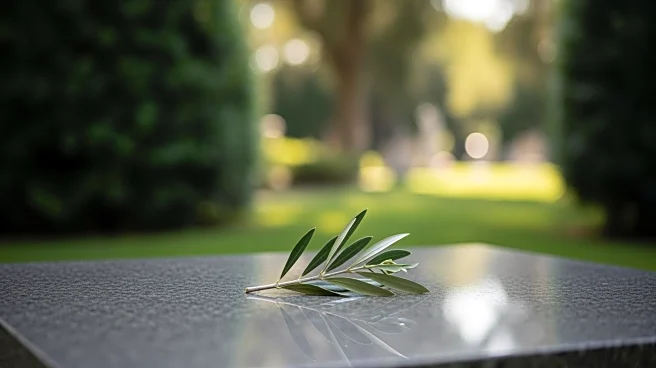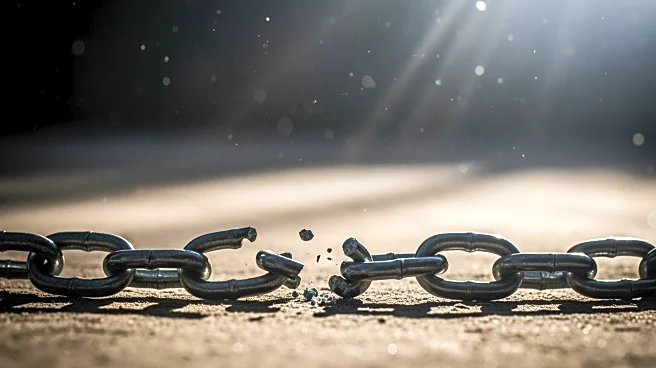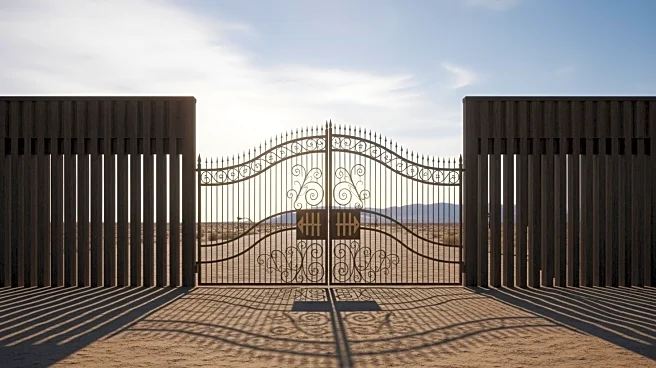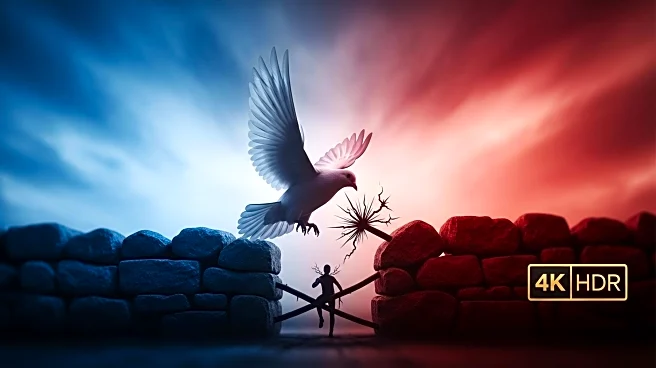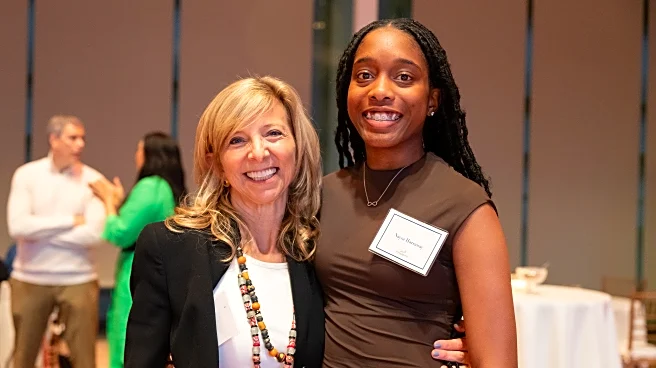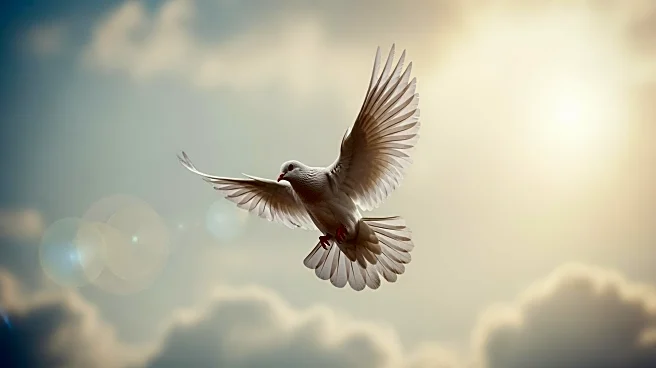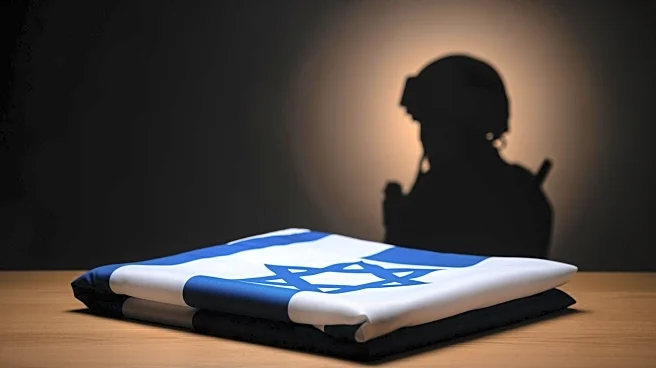What's Happening?
Yehuda Ne'eman, a 13-year-old boy, marked his bar mitzvah by wearing the tefillin of his late father, Dr. Eitan Ne'eman, at Soroka Medical Center. Dr. Ne'eman, a senior pediatric intensive care physician
and reserve IDF major, was killed in combat near the Gaza border two years ago. The ceremony took place at the same hospital where Dr. Ne'eman had saved lives and where Yehuda's life was saved twice. Yehuda's bar mitzvah was attended by family, friends, and medical staff, symbolizing a powerful connection to his father's legacy. Dr. Ne'eman was known for his dedication to medicine and his community, having trained at prestigious institutions like Yale and Johns Hopkins.
Why It's Important?
This event highlights the enduring impact of Dr. Ne'eman's life and work, both as a medical professional and a soldier. His legacy continues through his son, Yehuda, who embodies the values of courage and responsibility that his father championed. The ceremony underscores the personal sacrifices made by those in the medical and military fields, and the profound ways in which their contributions affect their families and communities. It also serves as a reminder of the ongoing conflicts and the personal stories behind the headlines, emphasizing the human cost of war and the resilience of those left behind.
What's Next?
Yehuda Ne'eman's journey continues as he carries forward his father's legacy. The ceremony at Soroka Medical Center, a place deeply connected to his family's history, marks a new chapter in his life. The Ne'eman family, along with the medical community at Soroka, will likely continue to honor Dr. Ne'eman's memory through their work and personal lives. This event may inspire others in similar situations to find strength in their loved ones' legacies and to continue their paths with courage and dedication.
Beyond the Headlines
The story of Yehuda Ne'eman's bar mitzvah offers a deeper look into the cultural and emotional significance of such ceremonies in Jewish tradition, particularly when intertwined with personal loss and legacy. It highlights the role of faith and community in providing support and continuity in the face of tragedy. The event also reflects broader themes of healing and remembrance, as well as the importance of honoring those who have made significant contributions to society, both in life and in death.




